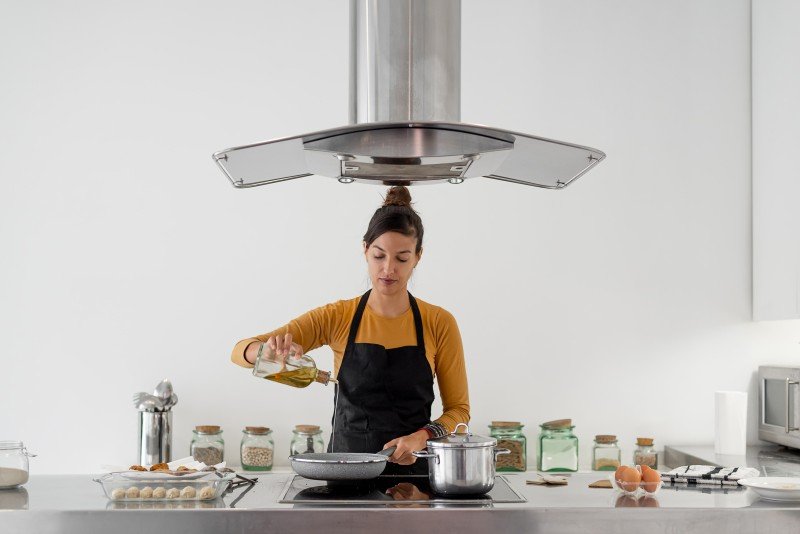Understanding Hobs and Ovens: A Comprehensive Guide for Cooking Enthusiasts
The kitchen is frequently considered as the heart of the home, where cooking productions come to life. 2 essential components of any kitchen are the hob and the oven. While they are both essential for food preparation and cooking, many homeowners might not totally understand the distinctions, performances, and numerous types readily available in the market today. In this article, we will explore these devices in information, assisting you make notified decisions for your culinary requirements.
Tabulation
- What is a Hob?
- 1.1 Types of Hobs
- 1.2 Benefits of Different Hob Types
- What is an Oven?
- 2.1 Types of Ovens
- 2.2 Benefits of Different Oven Types
- Picking the Right Hob and Oven for Your Kitchen
- Frequently Asked Questions (FAQs)
- Conclusion
What is a Hob?
A hob, frequently referred to as a cooktop, is a cooking surface that you position pots and pans on to prepare food. It includes a variety of heating components and is regularly installed on counter tops. In contemporary kitchens, hobs come in various designs, innovations, and functionalities.
1.1 Types of Hobs
There are several types of hobs readily available in the market:
| Type | Description |
|---|---|
| Gas Hob | Utilizes gas burners for cooking, providing precise temperature control. |
| Electric Hob | Operates using electrical heating components, typically seen in strong or glowing kinds. |
| Induction Hob | Uses magnetic fields to heat pots and pans directly, promoting energy performance. |
| Ceramic Hob | Functions a smooth glass top, utilizing electric coils underneath the surface area. |
| Strong Plate Hob | Conventional electric hobs with exposed metal plates that warm up. |
1.2 Benefits of Different Hob Types
Gas Hobs:
- Quick cooling and heating.
- Visual flame control for exact cooking.
Electric Hobs:
- Even heating; ideal for simmering and boiling.
- Easy to clean, specifically flat surfaces.
Induction Hobs:
- Energy-efficient as just the pot warms up.
- Security functions, such as automated shut-off.
Ceramic Hobs:
- Attractive looks with a smooth surface.
- Even surfaces for simple cleaning.
Solid Plate Hobs:
- Cost-effective and resilient.
- Helpful for basic cooking needs.
What is an Oven?
An oven is a kitchen appliance used for baking, roasting, and broiling food. Ovens can be standalone systems or built into kitchen cabinetry, supplying numerous cooking methods that can boost or transform components.
2.1 Types of Ovens
Similar to hobs, there are several types of ovens, each with its advantages:
| Type | Description |
|---|---|
| Conventional Oven | Runs with heating elements, best for baking. |
| Convection Oven | Uses fans to flow hot air, cooking food evenly and rapidly. |
| Microwave | Cooks food utilizing electro-magnetic radiation; suitable for reheating. |
| Steam Oven | Utilizes steam to cook food, maintaining wetness and nutrients. |
| Wall Oven | Built into the wall, using benefit and visual appeal. |
2.2 Benefits of Different Oven Types
Traditional Ovens:
- Simple to utilize without any complex settings.
- Versatile for different cooking approaches.
Convection Ovens:
- Faster cooking times due to air circulation.
- Improved browning and crisping for baked products.
Microwave Ovens:
- Quick cooking or reheating of food.
- Energy-efficient for low-volume cooking.
Steam Ovens:
- Health-conscious cooking that retains nutrients.
- Outstanding for baking bread and cooking veggies.
Wall Ovens:
- Convenient placement; saves space.
- Less flexing required to gain access to cooking dishes.
Picking the Right Hob and Oven for Your Kitchen
When choosing a hob and oven, factors such as space, cooking design, and personal choices ought to be thought about. Here's a basic guide to assist you select:
Factors to Consider
- Cooking Needs: Evaluate your cooking habits. Do you frequently bake, or is stovetop cooking more widespread?
- Area Availability: Measure your readily available kitchen space. Some hobs or ovens may require more space than others.
- Fuel Type: Decide in between gas and electric, based on schedule and personal choices.
- Budget: Determine what you're willing to spend and discover options within that variety.
Quick Tips
- Prioritize Efficiency: Look for energy-efficient designs to minimize long-term expenses.
- Read Reviews: Explore user reviews to collect viewpoints on performance and dependability.
- Speak with Professionals: Seek recommendations from kitchen design specialists when planning your layout.
Often Asked Questions (FAQs)
1. What is the difference between a hob and an oven?
A hob is a cooking surface normally for stovetop cooking, while an oven is an enclosed space used for baking, roasting, and broiling food.
2. Can Click Link use any pot on an induction hob?
No, induction hobs require magnetic pots and pans. Stainless steel and cast iron pots work, but non-magnetic products like aluminum will not.
3. How do convection ovens differ from conventional ovens?
Stove utilize fans to flow hot air for even cooking, whereas traditional ovens do not have this feature.
4. Is it possible to have both a hob and oven as a single system?
Yes, there are variety cookers that integrate a hob and an oven within one appliance, using a thorough cooking service.
5. How do I clean my hob and oven?
Most hobs and ovens have actually recommended cleaning approaches depending upon their materials. It is recommended to speak with the producer's guidelines for the best practices.
Comprehending the distinctions between hobs and ovens is crucial for anyone wanting to optimize their kitchen space or improve their cooking abilities. By knowing the numerous types, their advantages, and how to choose the ideal ones for your needs, cooking can end up being a more satisfying and efficient experience. Whether you are a knowledgeable chef or a beginner cook, the best mix of hob and oven can elevate your cooking productions to brand-new heights.

